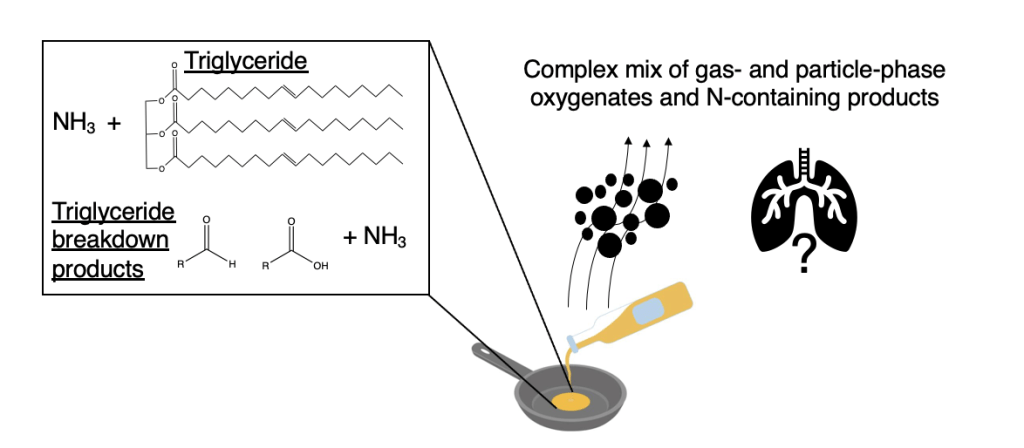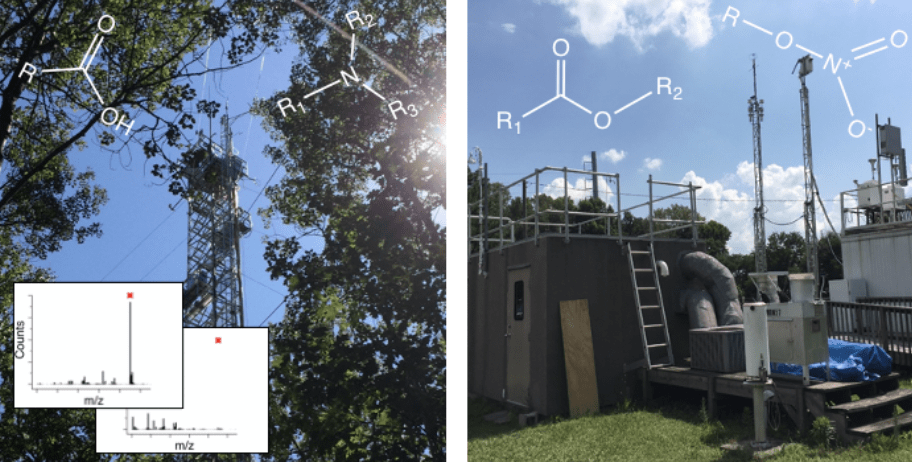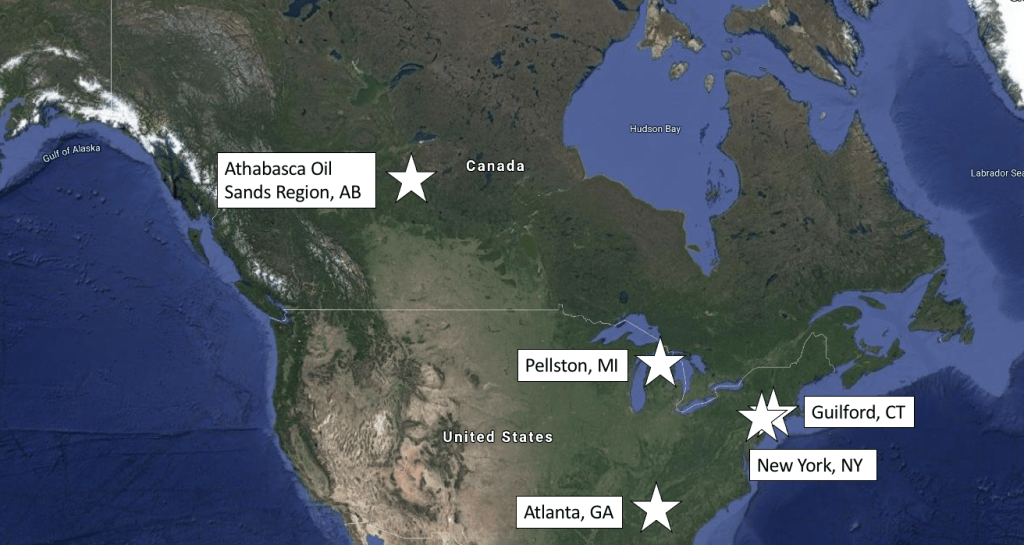Prior work from the University of Toronto
From the lab to the field: indoor emissions and chemistry across scales
Understanding the identity and transformations of chemicals in the indoor environment is critical for improving indoor air quality and reducing chemical exposures. Bridging laboratory and field experiments, during my postdoctoral research, I used a combination of online and offline mass spectrometry to investigate emissions from food cooking.

Gas- and particle-phase amide emissions from cooking

Using a simplified study system in the laboratory, we investigated the role of ammonia (from the thermal degradation of proteins in meat) in forming nitrogen-containing compounds during food cooking. We explored several different pathways responsible for amide formation, stemming from reactions between ammonia and components of heated cooking oil. The amides observed contained 2-18 carbons, spanned both gas and particle phases, and were modeled to be developmental toxins. This emphasizes the need to investigate the complex mixture of nitrogen-containing compounds emitted from meat cooking, particularly amides, to understand the health impacts associated with exposure to these species at high concentrations while cooking.
Field measurements of complex mixtures of cooking emissions

With other members of our group, I participated in the CASA experiment in the spring of 2022 (CASA stands for Chemical Assessment of Surfaces and Air, and was a large multi-institution campaign hosted by NIST at their Net-Zero Energy Residential Test Facility). At CASA, we performed perturbation experiments in the unoccupied test house to understand emissions and indoor chemistry in realistic indoor environmental conditions.
Separately, I also collaborated with researchers in Toronto to collect measurements in an active commercial kitchen, focusing on understanding the real-world complex mixture of emissions from cooking and cleaning.
Stay tuned for more information about these studies!
Prior work from Yale University
The objectives of my doctoral research were to develop and apply non-targeted high resolution tandem mass spectrometry techniques to investigate the molecular-level evolution of understudied multifunctional gases and aerosols in the atmosphere. We studied a number of outdoor environments using these tools, some of which are summarized below.
Tandem mass spectrometry to expand our understanding of multifunctional organic compounds in the air

One of my major interests is the development of new tools to study complex mixtures. To this end, during my Ph.D., I developed non-targeted tandem mass spectrometry (MS/MS) tools to study the composition of multifunctional organic gases and aerosols. Our MS/MS methods allowed us to get a closer look at aerosol multifunctionality; we observed that 81% of aerosol species across several ambient sites contained 2+ functional groups, including oxygen-, nitrogen-, and/or sulfur-containing moities.
Organic aerosol compositional variability and its potential impacts on aerosol properties

We leveraged these new high resolution mass spectrometry tools to investigate previously unreported compositional variability of organic aerosol and its properties. By tracking the identity of individual chemical species, we observed that 66 ± 13% of compounds varied from day-to-day across several field sites; this variability was driven by changes in precursor identity, oxidation chemistry, and air parcel history. Learn more here.
Building on these observations, we modeled two key aerosol properties: aerosol phase state and thermodynamic mixing behavior. We observed that despite the sensitivity of these properties to molecular composition, these properties exhibited less dramatic changes from day-to-day, and were more heavily controlled by other factors (e.g., the presence of inorganic ions and aerosol liquid water). Learn more here.
Exploring aerosol multifunctionality in the ambient atmosphere

Expanding our initial tandem mass spectrometry-based analyses of organic aerosols collected in Pellston, MI (PROPHET 2016), in Atlanta, GA, and in New York, NY (discussed at length here), we conducted two additional case studies of aerosol composition and chemical evolution. We examined boreal forest fire smoke in collaboration with Environment and Climate Change Canada, from a fire in the Athabasca Oil Sands region in Alberta, Canada (learn more here). We also set up an air monitoring site in Guilford, Connecticut, for long-term characterization of the aging urban outflow from East Coast metropolitan areas, and investigated changes in aerosol composition across summer and winter seasons (learn more here).